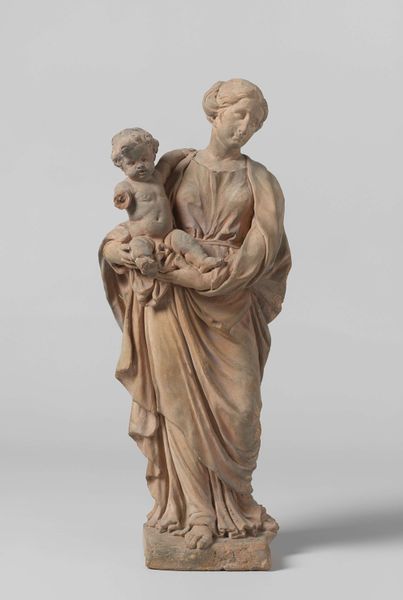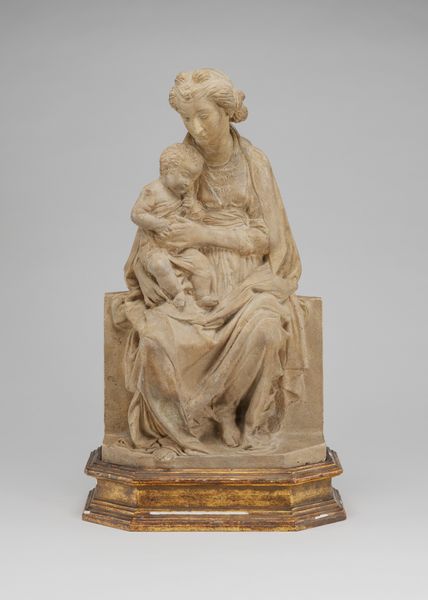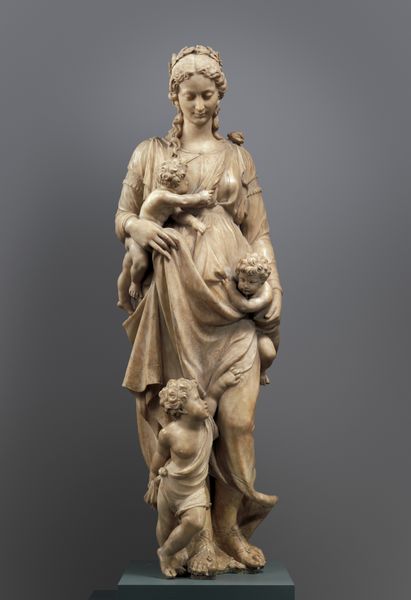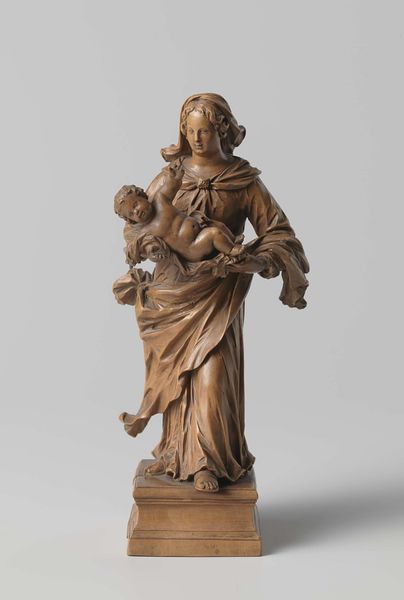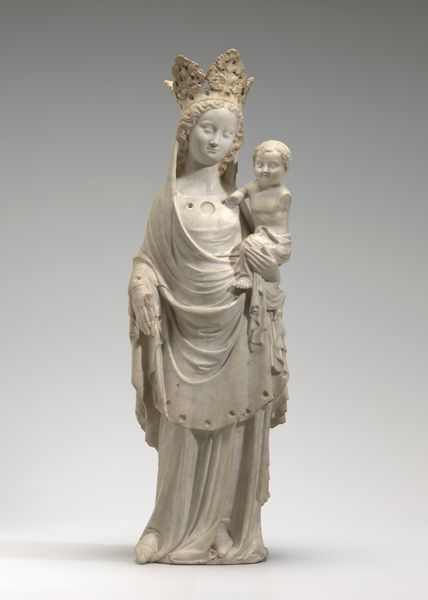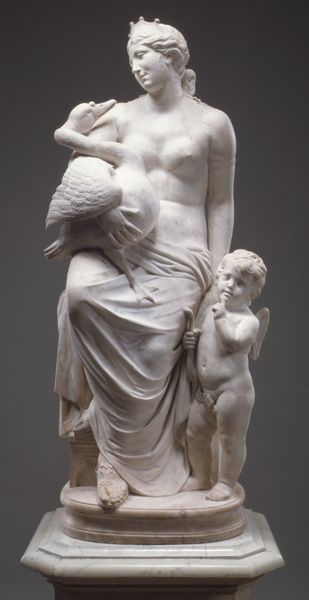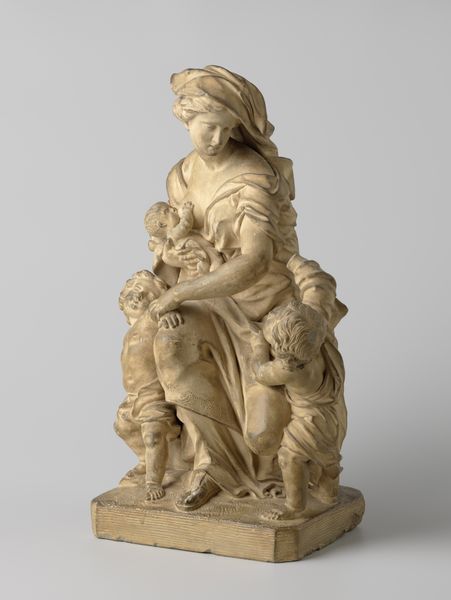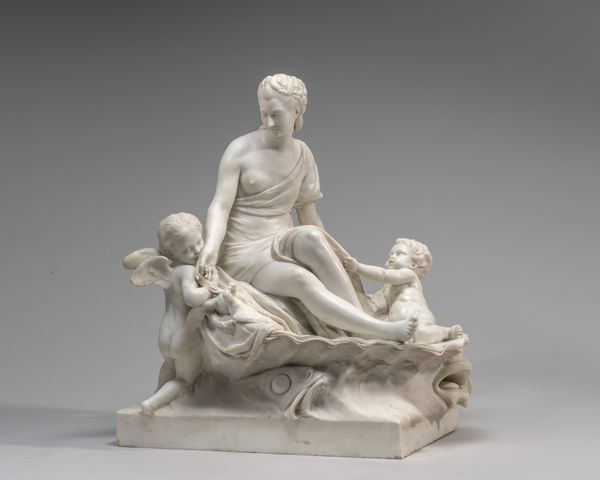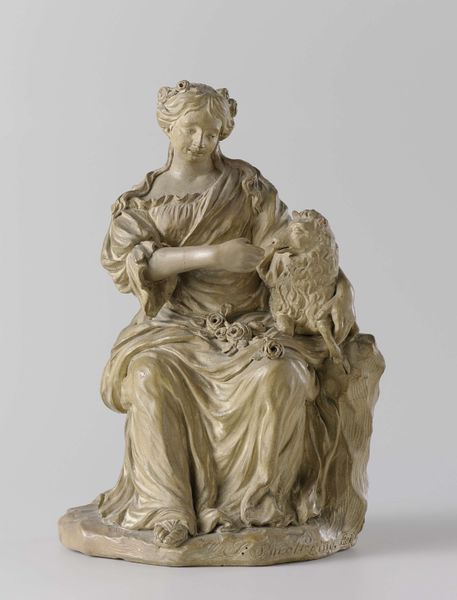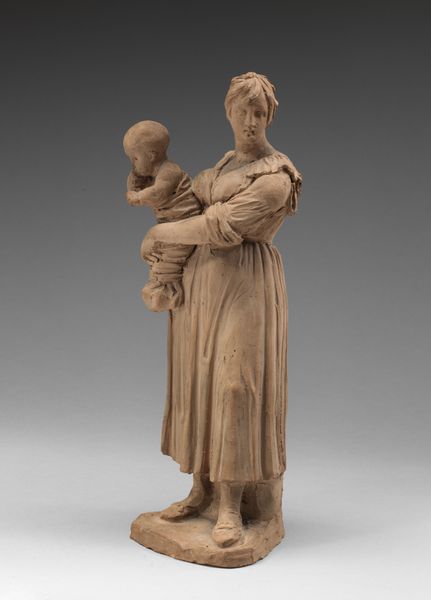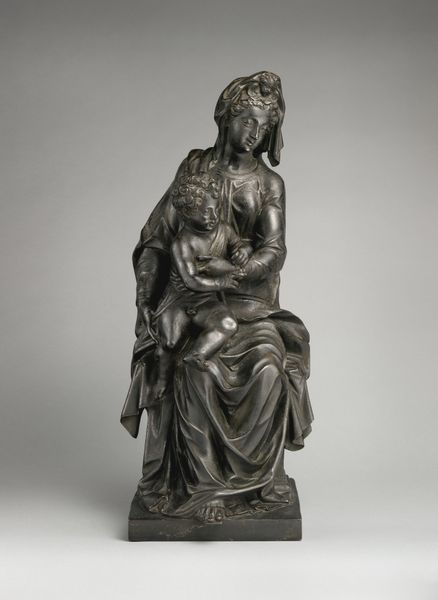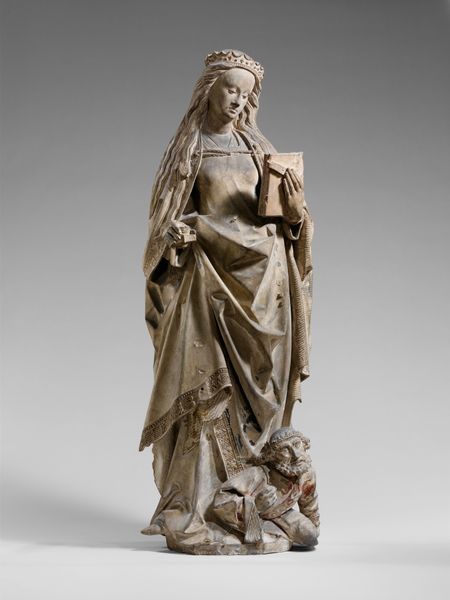
sculpture, marble
#
portrait
#
neoclacissism
#
sculpture
#
figuration
#
sculpture
#
history-painting
#
academic-art
#
marble
#
statue
Dimensions: height 192 cm, width 80 cm, depth 47 cm, weight 647 kg, width 69.6 cm, depth 37 cm, depth 42 cm
Copyright: Rijks Museum: Open Domain
Curator: Standing before us is Lorenzo Bartolini’s marble sculpture, “Carità educatrice,” or “Charity the Educator,” created somewhere around 1842 to 1845. I am instantly drawn to the tenderness rendered in stone. What's grabbing you about it? Editor: The figures all seem to be captured in a kind of intimate moment, despite the rigidity you might expect from marble. But beneath that immediate domestic calm, I sense deeper layers of meaning bubbling under the surface. It reminds me of the classic trope of Melancholia: beauty with the inescapable undertow of temporal existence. Curator: Absolutely. Bartolini’s sculptures often possess this almost unbearable softness, and this piece seems particularly adept at exploring a certain idealism mixed with humanity’s flaws. Notice how the woman's drapery clings to her form – almost as if blown by the winds of inspiration. This neoclassical trope has roots in ancient Greco-Roman statues of deities, but she lacks divine detachment; there is a softness in the downward cast of her eyes, looking gently, attentively toward the children. The image of “charity” often featured matronly abundance; in sharp contrast, the statue emphasizes simple familial love. Editor: Which ties in beautifully to the history painting aspect. Instead of valorizing ancient generals or civic leaders, the artist makes everyday, idealized family life seem mythic. This image strikes me in contrast to conventional, moralizing versions of “Charity.” It is more psychological and introspective, making the viewer consider personal ethics more intimately. Curator: You've really hit on it! See how the figures cluster together almost forming an emotional shield. The younger boy glances toward us while holding onto the woman's robe—almost as if he's being introduced into our realm, as if we are somehow outside this private familial microcosm. It's intimate, vulnerable…and powerful, I feel. Editor: I concur. "Charity the Educator" uses ancient artistic tools to address what ultimately persists across all epochs of time: tenderness, belonging, and growth in familial relations. It is the everyday made everlasting by memory, made present here again in the eyes of the statue's watchers.
Comments
rijksmuseum about 2 years ago
⋮
The woman is caring for two children. She encourages the older one to read. Inscribed on his scroll is the moral: ‘Do unto others as you would have others do unto you.’ The woman personifies the virtue of Caritas (Charity) in her role as educator, a typical Italian theme. With this sculpture Bartolini contributed to a topical discussion about the importance of education in Tuscany.
Join the conversation
Join millions of artists and users on Artera today and experience the ultimate creative platform.
